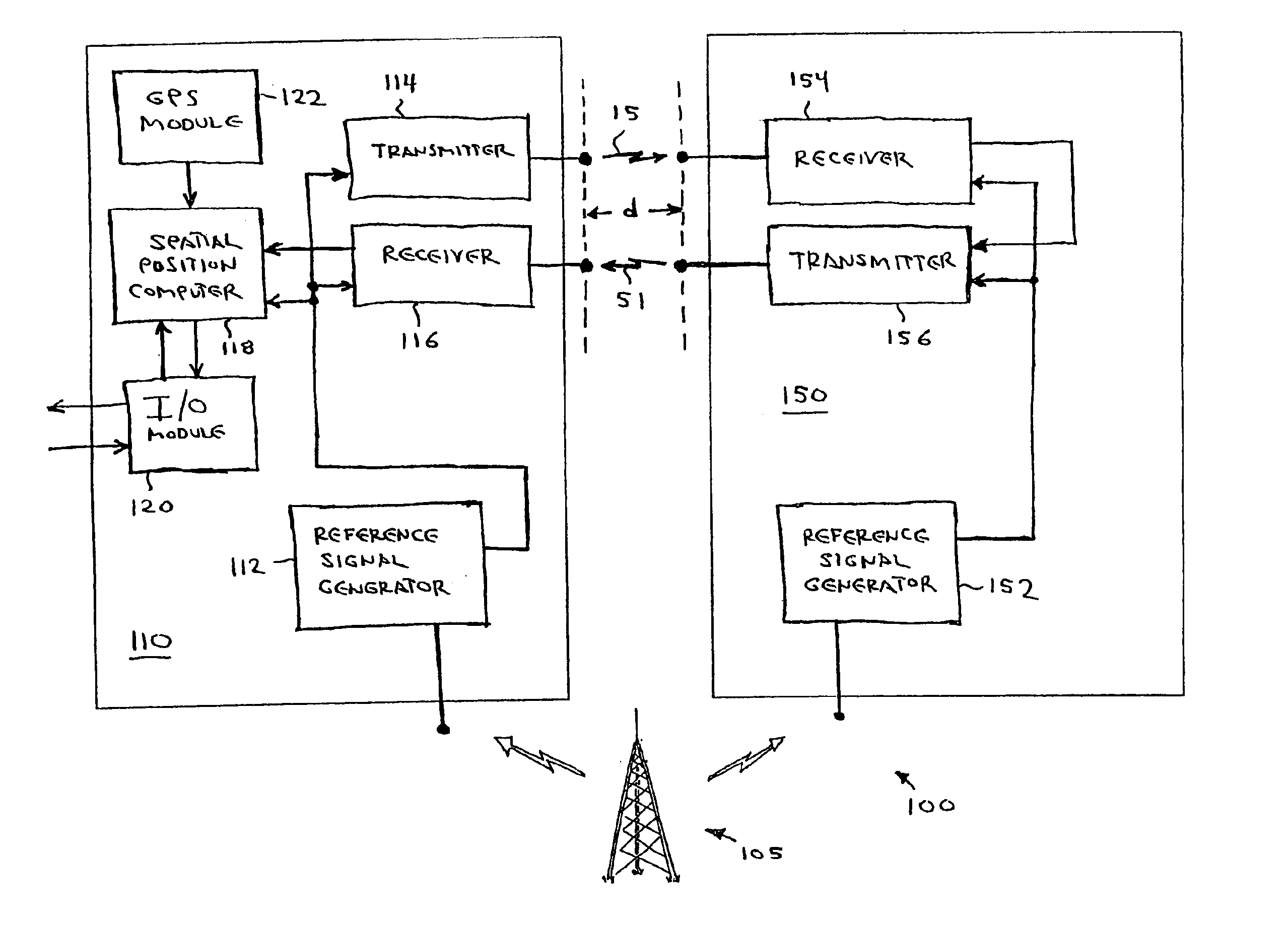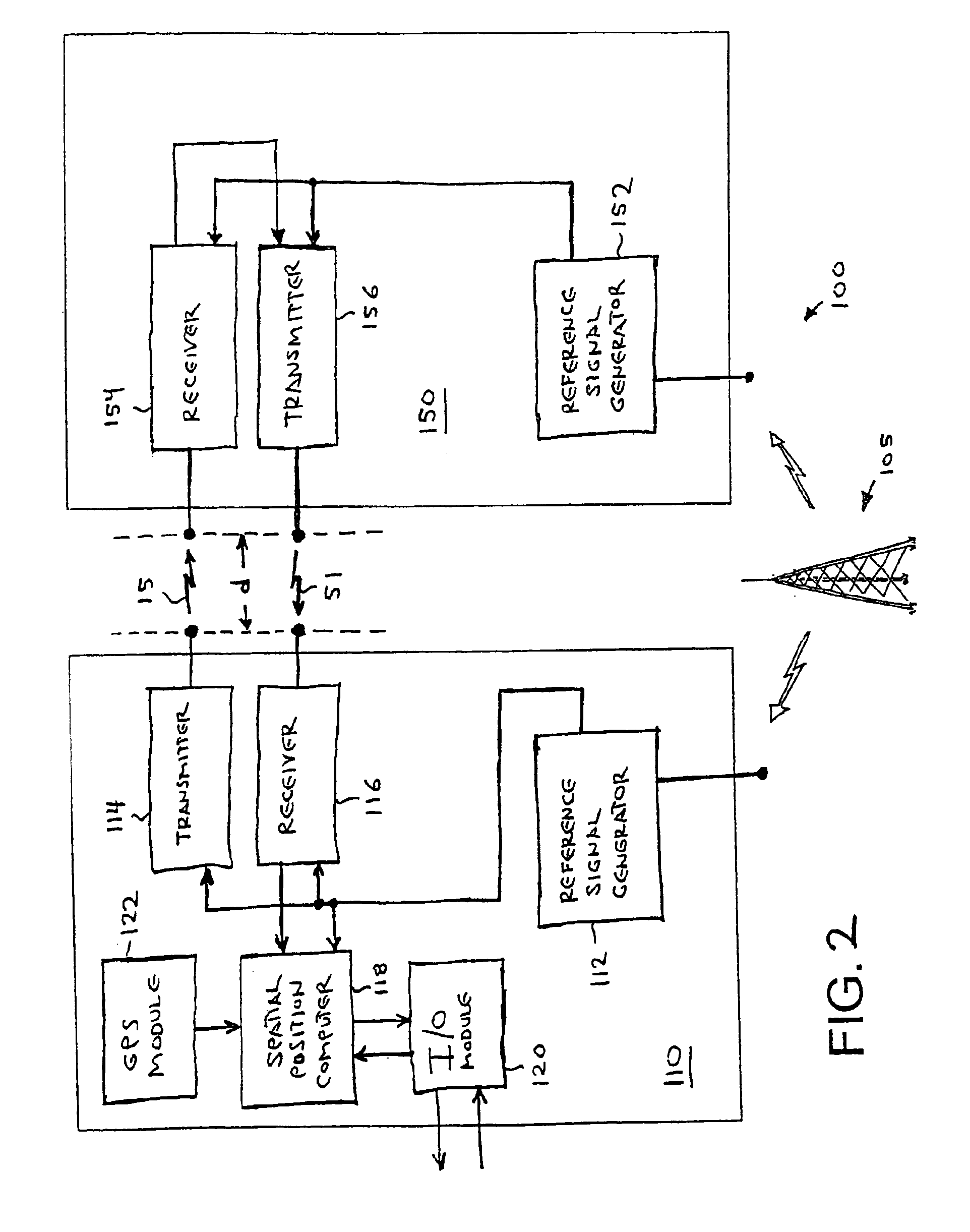Spatial position determination system
- Summary
- Abstract
- Description
- Claims
- Application Information
AI Technical Summary
Benefits of technology
Problems solved by technology
Method used
Image
Examples
example a
[0114]Instead of transmitting an unmodulated carrier as described above, tracker 110 can transmit a carrier phase modulated by a pseudo-random sequence. The chip time (i.e., duration of each phase modulation symbol) can be determined by the time base shared by the tracker and the target. The chip rate can be a predetermined fraction of the carrier frequency, or a predetermined fraction of the broadcasted signal's frequency.
[0115]Transponder 150 performs a correlation maximization search to determine the start time of the pseudo-random sequence. This correlation needs to be performed only during the initial synchronization acquisition process. All subsequent transmissions can remain synchronized due to the common time base.
[0116]In this variation, system 100 relies on the ability of both tracker 110 and transponder 150 to measure the phase of the signals they each receive. The DSSS phase modulation does not interfere with this measurement. In each DSSS receiver the incoming signal is...
example b
[0118]In some implementations, it may be desirable to phase stabilize to an FM broadcast station. However, FM signals do not have constant phase. Variations of tracker 110 and transponder 150 may overcome this issue by both computing an averaged reference signal in the same way. For example, each unit may compute the instantaneous broadcast frequency to be 107 divided by the time elapsed during the previous 107 cycles. Continuous computation would require a circular buffer.
example c
[0119]Phase stabilization can be to subcarriers of a broadcasted signal rather than carrier of the signal. For example, variations of reference signal generators 112 and 152 can phase stabilize other components to the color-burst frequency from TV stations, or to commercial subcarriers from FM broadcast stations.
PUM
 Login to View More
Login to View More Abstract
Description
Claims
Application Information
 Login to View More
Login to View More - R&D
- Intellectual Property
- Life Sciences
- Materials
- Tech Scout
- Unparalleled Data Quality
- Higher Quality Content
- 60% Fewer Hallucinations
Browse by: Latest US Patents, China's latest patents, Technical Efficacy Thesaurus, Application Domain, Technology Topic, Popular Technical Reports.
© 2025 PatSnap. All rights reserved.Legal|Privacy policy|Modern Slavery Act Transparency Statement|Sitemap|About US| Contact US: help@patsnap.com



